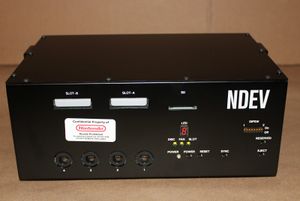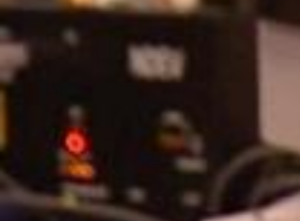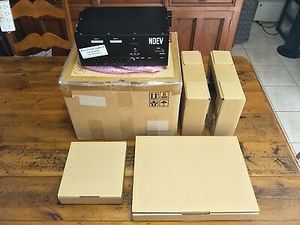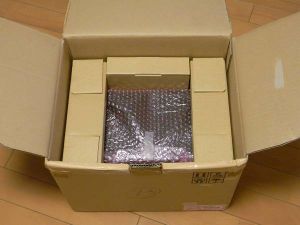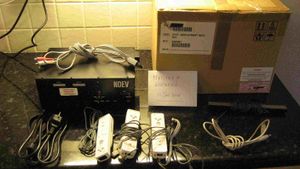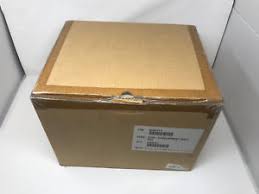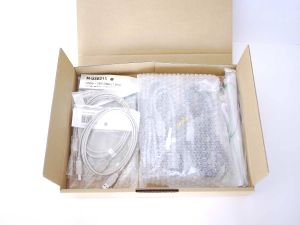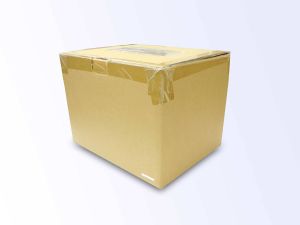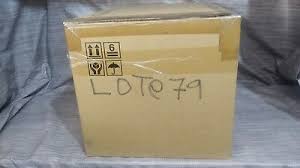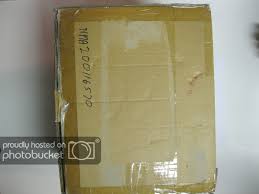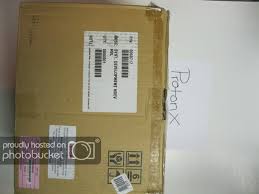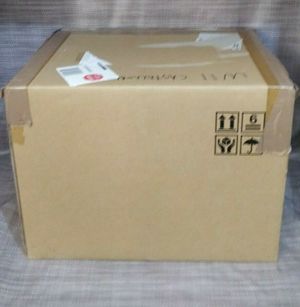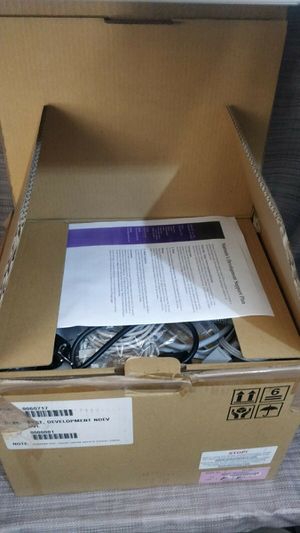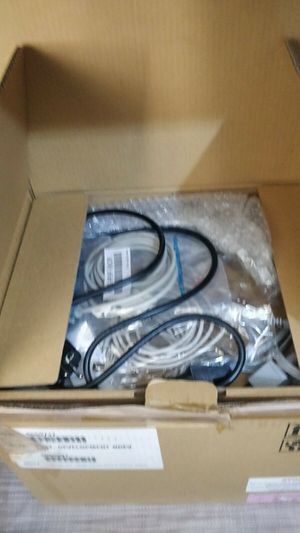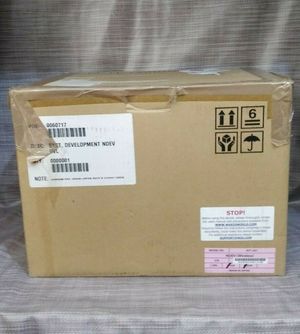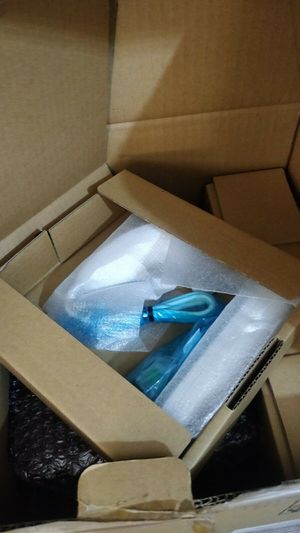Difference between revisions of "NDEV"
(more work needed still) |
|||
| Line 1: | Line 1: | ||
| − | |||
[[File:Ndev-21.jpg|thumb|NDEV 2.1]] | [[File:Ndev-21.jpg|thumb|NDEV 2.1]] | ||
| − | The '''NDEV''' (product code '''RVT-001''') is the main development system for the Wii, taking the form of a | + | The '''NDEV''' ([[RVL Product Codes|product code]] '''RVT-001''') is the main development system for the Wii, taking the form of a black box including full Wii hardware with 128MB of RAM as well as debugger, optical disc emulation, and Host I/O hardware. |
| − | The NDEV features all the ports and functionality found on a retail system, | + | The NDEV features all the ports and functionality found on a retail system, as well as 3 additional USB ports and one additional (RS-232/DB9) serial port for disc emulation and host communication. It does not have a disc drive or internal hard drive, so all software is read from NAND or the host system. The NDEV cannot boot without an attached host system, and can only launch disc titles if they are emulated by an [[ODEM]] program on the host system. |
| + | |||
| + | The typical development flow using an NDEV is to use the "ndrun" command in the [[Revolution SDK]] to launch ODEM to create a simulated optical disc image which runs the associated ELF directly from a filesystem on the host PC. Debug output can be gathered over the serial port as well as through the [[CodeWarrior IDE]] using the debug USB ports. | ||
==Known Versions== | ==Known Versions== | ||
| − | [[File:Ndev-1x.png|thumb|The only known picture of | + | [[File:Ndev-1x.png|thumb|The only known picture of an enclosed NDEV 1.x, cropped from the [[E3 2006]] [[RVT-R Reader]] picture]] |
[[File:Ndev-20.png|thumb|Image of a NDEV 2.0 showing the 4 wired Wii Remote ports; from [[Dev Tool]] V4 setup guide.]] | [[File:Ndev-20.png|thumb|Image of a NDEV 2.0 showing the 4 wired Wii Remote ports; from [[Dev Tool]] V4 setup guide.]] | ||
| − | The | + | The primary 'final' NDEV version which is most widely available (by far) is the NDEV 2.1; this was the version used for most of the Wii's lifespan and was distributed in much greater quantities than all other versions. |
| − | + | ||
| + | NDEV 1.x were the initial systems used from February 2006 to around June 2006 for internal bringup and third-party game development; there may be some level of discrepancy between those systems used internally and the ones distributed to third-parties, as internal documentation refers to the NDEV 2.0 as the 'main system for game developers' with NDEV 1.x being a bare board intended only for internal bringup, but it is known that the Revolution SDK 1.0 and some form of 1.x NDEV units were briefly distributed to third-party developers. | ||
| + | |||
| + | NDEV 1.x (at least the internal versions) had a number of features not present in 2.0 and later, including: | ||
| − | * | + | * Variable clock frequency for Broadway & Hollywood (controlled with DIP switches or an external clock connected over BNC) |
| − | * | + | * More test points |
| − | * | + | * JTAG ports for Broadway & Hollywood |
| − | * | + | * Additional power supply testing features |
| + | * 2 external SD slots in addition to the internal Wi-Fi SDIO slot (the reason for this is unknown, although having 2 SD slots may have been planned for the final product at some point, but it is not referenced anywhere else; support for both is still included in IOS) | ||
| + | * Wii and GameCube drive ports | ||
| − | + | Some (possibly all?) NDEV 1.x units also included Hollywood chips with blank [[EFuse|eFuses]]. | |
| − | + | It is unknown what the exact difference between the NDEV 1.x revisions (known to be NDEV 1.0, 1.1, and 1.2) are, but it is most likely just the Hollywood chip revision since that is how [[OSGetConsoleType]] identifies them. | |
| − | |||
| − | |||
| − | |||
| − | |||
| − | + | NDEV 2.0 (developed simultaneously with 1.x) includes mostly-final hardware, aside from a few minor bugs as well as the inclusion of 4 wired Wii Remote controller ports (the 2.1 decreases this to only 1, although a separate "RF splitter" can be used to access all 4). The initial release of the 2.0 did not include wireless controller support, but the "2.01(ES)" revision added it. | |
| − | + | Later versions of the SDK OS library also have [[OSGetConsoleType]] strings mentioning a "NDEV 3.0" and "NDEV 3.1", possibly for [[Bollywood]] or Wii U bringup (early Wii U IOS stuff references it being tested on an NDEV). These were probably not released to third-party developers. | |
| − | |||
| − | |||
==Gallery== | ==Gallery== | ||
Revision as of 06:05, 11 September 2020
The NDEV (product code RVT-001) is the main development system for the Wii, taking the form of a black box including full Wii hardware with 128MB of RAM as well as debugger, optical disc emulation, and Host I/O hardware.
The NDEV features all the ports and functionality found on a retail system, as well as 3 additional USB ports and one additional (RS-232/DB9) serial port for disc emulation and host communication. It does not have a disc drive or internal hard drive, so all software is read from NAND or the host system. The NDEV cannot boot without an attached host system, and can only launch disc titles if they are emulated by an ODEM program on the host system.
The typical development flow using an NDEV is to use the "ndrun" command in the Revolution SDK to launch ODEM to create a simulated optical disc image which runs the associated ELF directly from a filesystem on the host PC. Debug output can be gathered over the serial port as well as through the CodeWarrior IDE using the debug USB ports.
Known Versions
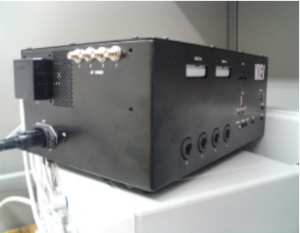
The primary 'final' NDEV version which is most widely available (by far) is the NDEV 2.1; this was the version used for most of the Wii's lifespan and was distributed in much greater quantities than all other versions.
NDEV 1.x were the initial systems used from February 2006 to around June 2006 for internal bringup and third-party game development; there may be some level of discrepancy between those systems used internally and the ones distributed to third-parties, as internal documentation refers to the NDEV 2.0 as the 'main system for game developers' with NDEV 1.x being a bare board intended only for internal bringup, but it is known that the Revolution SDK 1.0 and some form of 1.x NDEV units were briefly distributed to third-party developers.
NDEV 1.x (at least the internal versions) had a number of features not present in 2.0 and later, including:
- Variable clock frequency for Broadway & Hollywood (controlled with DIP switches or an external clock connected over BNC)
- More test points
- JTAG ports for Broadway & Hollywood
- Additional power supply testing features
- 2 external SD slots in addition to the internal Wi-Fi SDIO slot (the reason for this is unknown, although having 2 SD slots may have been planned for the final product at some point, but it is not referenced anywhere else; support for both is still included in IOS)
- Wii and GameCube drive ports
Some (possibly all?) NDEV 1.x units also included Hollywood chips with blank eFuses.
It is unknown what the exact difference between the NDEV 1.x revisions (known to be NDEV 1.0, 1.1, and 1.2) are, but it is most likely just the Hollywood chip revision since that is how OSGetConsoleType identifies them.
NDEV 2.0 (developed simultaneously with 1.x) includes mostly-final hardware, aside from a few minor bugs as well as the inclusion of 4 wired Wii Remote controller ports (the 2.1 decreases this to only 1, although a separate "RF splitter" can be used to access all 4). The initial release of the 2.0 did not include wireless controller support, but the "2.01(ES)" revision added it.
Later versions of the SDK OS library also have OSGetConsoleType strings mentioning a "NDEV 3.0" and "NDEV 3.1", possibly for Bollywood or Wii U bringup (early Wii U IOS stuff references it being tested on an NDEV). These were probably not released to third-party developers.
